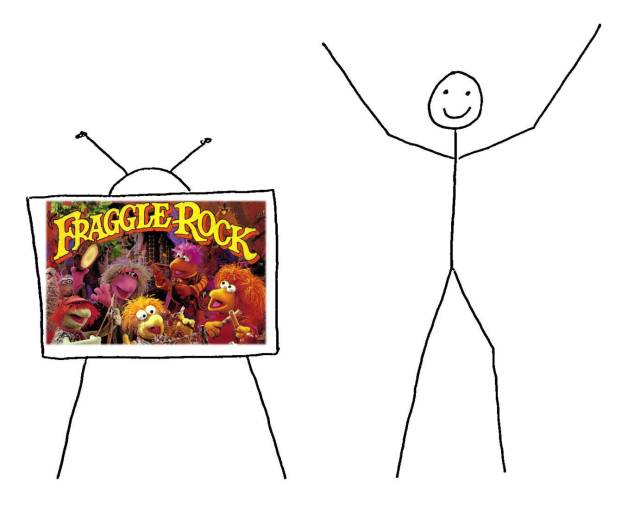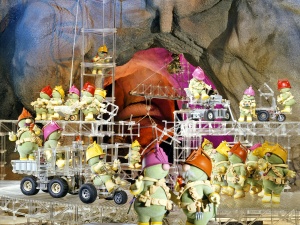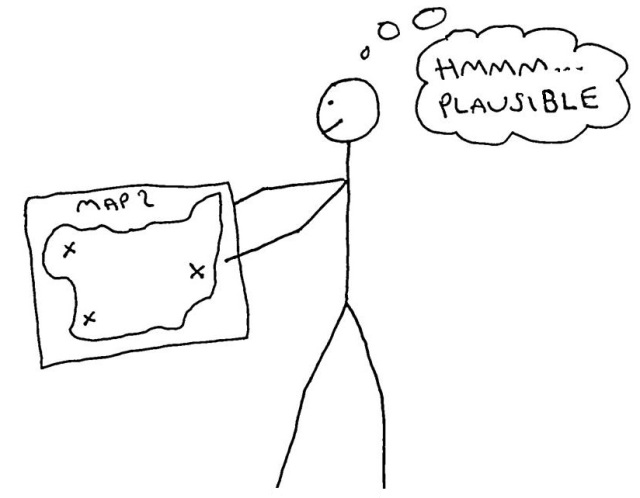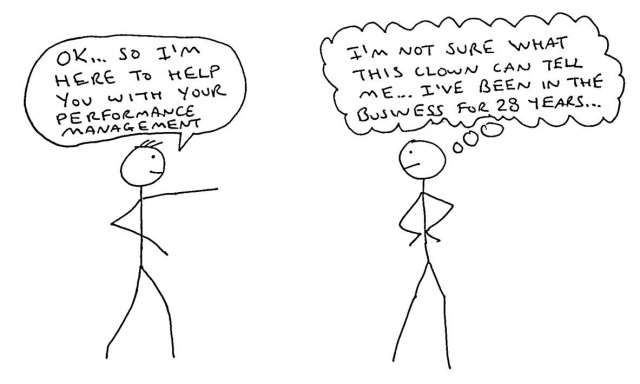I recently had a conversation on Twitter about a national campaign called ‘Sign up to Safety’, which aims to reduce avoidable harm in the NHS. Now, avoidable harm is clearly something worth tackling. The sticking point for me was that they have a numerical target to reduce avoidable harm by 50%.
What I can’t understand is why anyone would aim to reduce avoidable harm by 50% – if it’s avoidable, we should avoid it! Not just some of it. Why would you want to be ‘half-safe’?
It’s like deliberately planning to retain the other 50% of harm! Which, of course, sounds silly – because it is silly.
There’s a lot that’s silly (and harmful) about such targets, such as the assumption that a target is necessary to make people want to reduce harm in the first place. If they know that reducing harm is important (i.e. a priority), then the target is irrelevant. It might even be possible to measure some types of harm reduction, so that’s good too, because then you have measures to help you understand how your harm reduction efforts are going. The target is still irrelevant though.

Anyway, why is the target 50%? How was this determined? Why not 55%, or 70%, or 81.648%? If it was set at 50% because it was deemed attainable, then what’s the point of the target, because you’re gonna attain it anyway, right?
Why is a 49.999% reduction a failure, whereas a 50.001% reduction a success? These invisible dividing lines between ‘good’ and ‘bad’ simply don’t exist in the real world. If you could reduce more harm than 50% then you would, wouldn’t you? If so, the target is irrelevant. If you wouldn’t, then why not?
How about if you reduced all the harm you possibly could, but this only amounted to 35% less harm? Have you failed? Why? What about if you had it within your gift to reduce harm by around 80-90%, but only reduced it by 55%? You’ve exceeded the target, but is this good?
Then there’s the stuff about method. How does a numerical target set at any level help you identify and address harm reduction opportunities? It doesn’t, because targets don’t provide a method.
Also, as I’ve said before, it’s better to aim for 100% (i.e. perfection) than just a fraction of your true goal. You’d then measure, learn and improve as you go along. Yes, in many domains (such as harm or crime reduction) it may not ultimately be possible to completely eradicate the object of your reduction efforts, but this shouldn’t stop anyone from trying.
Let me give you a few examples using the Stick People, to try and demonstrate why numerical targets like the 50% target for avoidable harm are pointless (not to mention arbitrary and prone to causing dysfunctional behaviour).
Here’s Stick Doctor. Today, Stick Doctor encountered two opportunities to reduce harm in her hospital. Guess how many she addressed? (Clue: It wasn’t one).

This is Stick Cop. Stick Cop currently has four investigations in his in-tray. He’s decided to investigate all of them to the best of his ability. Not just two.

Here’s Stick Child. Stick Child saw one opportunity to help a group of under-10s get their heads around some basic performance management concepts. He didn’t stop half way through.

Get it now?
If you have a worthwhile priority, just focus on that. Measure your progress, using the right measures in the right way. Learn and improve. You don’t need the target.
Reduce avoidable harm by reducing numerical targets!
By 100%.

 At bedtime, Stick Child’s Daddy often reads his son a story from his favourite story book, “Medieval Stories from Stick Kingdom with an Inevitable Systems Thinking Moral”. One recent story they particularly enjoyed was called “A Tale of Two Kings”, which went a bit like this…
At bedtime, Stick Child’s Daddy often reads his son a story from his favourite story book, “Medieval Stories from Stick Kingdom with an Inevitable Systems Thinking Moral”. One recent story they particularly enjoyed was called “A Tale of Two Kings”, which went a bit like this…




 The Doozers actually wanted the Fraggles to eat their constructions so they could go on to build more. This was essentially the only interaction between Doozers and Fraggles; Doozers spent most of their time building, and Fraggles spent much of their time eating Doozer buildings. They thus form an odd sort of
The Doozers actually wanted the Fraggles to eat their constructions so they could go on to build more. This was essentially the only interaction between Doozers and Fraggles; Doozers spent most of their time building, and Fraggles spent much of their time eating Doozer buildings. They thus form an odd sort of 
























 Last one. This plant wants to reach its full potential, but its roots are restricted by the plant pot, which it has outgrown. You’re expected to tend to it but aren’t allowed to re-pot it. Frustrating huh? Well, that’s another system condition no amount of your outstanding leadership can fix. Your management have the responsibility of improving the system conditions (i.e. providing you with a bigger plant pot) so that you can demonstrate what a great gardener you are. Leadership is not enough.
Last one. This plant wants to reach its full potential, but its roots are restricted by the plant pot, which it has outgrown. You’re expected to tend to it but aren’t allowed to re-pot it. Frustrating huh? Well, that’s another system condition no amount of your outstanding leadership can fix. Your management have the responsibility of improving the system conditions (i.e. providing you with a bigger plant pot) so that you can demonstrate what a great gardener you are. Leadership is not enough.